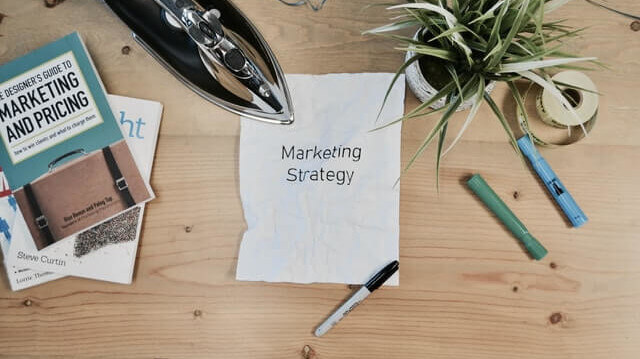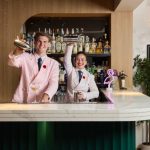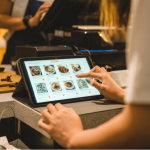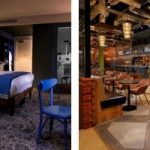Hotel Marketing is only effective if the execution is done right. It’s all about how the message is being communicated, how it is sent to future & existing guests plus how well are your campaigns planned?
NB: This is an article by Staah
The core of a good hotel marketing strategy is to promote the right product in the right place, at the right price, and at the right time to the right audience. A planned approach to marketing helps you to set clear objectives. So it’s extremely important that you research your target audience for guest segmentation and check what’s trending in your market.
Subscribe to our weekly newsletter and stay up to date
History
Before we dive into the Ps of hotel marketing, in case you are a newbie let us give you a little background of how these core principles came about. The marketing mix was originally a concept given by Neil H. Borden, who elaborated on James Culliton’s concept of business executives being mixers of ingredients. Product, Price, Place & Promotion. The 4Ps then paved the way for two modern academics, Booms and Bitner, who added 3 additional factors to the 4Ps – People, Process, and Physical evidence.
Let’s apply them now in your hotel marketing strategy:
1. PRODUCT – Hotel and the rooms
The product or service you’re selling should be at the center of every element of your marketing mix.
In a hotelier’s case or any accommodation provider, selling rooms is the main product to reach full occupancy.
To begin, Analyse from time to time how great is your offer performing, is it up to the expectations of your target audience? plus try new ways to add value and differentiate your brand without making promises that may not be met by the actual product itself. Offering last-minute deals, add ons or upgrades is a great way to drive revenue. There are plenty of upselling tools available. Find out more here
Digital marketing is perfect for showcasing your room, through SEO, social media posts, paid advertising, influencer marketing, etc.
2. PRICE – Room price/deal
The second P in the formula is the price which is the only revenue-generating element of the mix.
Revenue management is the art of analysing and optimising pricing as a key lever.
While setting your prices, you should understand your guests, market conditions, and competitor prices. How have you positioned yourself, which channels are you getting more bookings from, and what strategy is working? Set the price of your most basic room the same as the cheapest room in the market. Set the pricing of other rooms the same as your closest competitors’ basic rooms. This will allow you to attract a wider diaspora of travelers.
With digital marketing, you can offer deals through your email marketing, loyalty programs,etc.
3. PLACE – Online presence
The third P in the marketing mix is the place. The place is where your availability and rates are seen. How well have you showcased your property online? Make sure your website is well-designed with easy navigation and simple booking steps.
Monitor your online presence, are you appearing on the search page? have you listed your property on the top performing OTA channels, how well are you marketing to attract direct bookings from your main website?
Understanding the buying cycles will help you determine which channels are most effective for each stage of the cycle; some guests may be ready for direct sales at any given time while others may only purchase online during certain times of year (e.g., Christmas). Have a good booking engine that helps you give data and analytics of the booking funnel, etc.
4. PROMOTION – Right messaging
So, you have a fantastic room, at an appealing price, which is available in all the right places, but how do guests know this? Here comes the fourth marketing mix which is Promotion. Promotion is about communicating the right messages about your accommodation property and amenities to your potential bookers, regardless of their stage in the buyer journey, to generate awareness, interest, desire or action.
Small changes in the way you promote and sell your products can lead to dramatic changes in your results. Even small changes in your advertising can lead immediately to higher sales.
To choose the best tools to make your job easy. If your customer is a regular on Instagram, then that’s where you need to be talking to them!
Make sure to make the most during peak seasons, local events, holiday seasons, etc.
Partner with your local restaurants and tour operators to offer an attractive package or direct deals on social media. With sustainability trending with travelers, these days make sure to send out this message if you are into eco-friendly initiatives.
5. PEOPLE – Your team
They are the ones who define your brand’s success. People refer to employees who work for your business. It covers everyone who is directly or indirectly involved in marketing, selling, or offering customer service for your property. It’s a two-way process if you make your people happy they will be motivated to work for your brand with full motivation and commitment.
Your hospitality technology choices are critical to increasing staff productivity. Not only do cloud-based distribution systems such as a channel manager improve your reach; they improve operational efficiency so your staff and you can focus on improving the guest experience.
It’s like you continue investing in new technology, strategies, and people with long-term dividends in mind, you need to continue making changes to improve productivity.
Providing an open line for them to reach you increases the likelihood that problems will be brought to your attention.
6. PROCESS – Guest experience
The process is used to describe the steps taken to deliver a good guest experience. All accommodation providers strive to provide a seamless, effective, and customer-friendly journey, but this cannot be done without the proper processes in place. By understanding the steps of the customer journey, from making an online inquiry to requesting information and making a booking you can work on a good process plan. Make your booking journey easy to find and make on your website. Have a good email in place and there is no harm to offer add-ons well.
But the question is how long will it take for a potential guest to get a response after making an inquiry? How can we ensure that reviews are managed after the guests check out and are well responded to? How can technology be used to improve the effectiveness of our procedures? Each of these factors contributes to satisfying the guests.
7. PHYSICAL EVIDENCE – Service
Before a service is experienced, it first has to be delivered. Every interaction your guests have with your business is accompanied by physical proof. We’re talking about every single element that goes into the visual aesthetics of your hotel or service, from the ambiance to the amenities in your hotel.
Physical proof also encompasses more than simply the marketing-related items that guests see; it also refers to operational features like how your team presents themselves, hotel cleanliness, branding, and digital positioning on your website and social media posts.
Conclusion
For accommodation providers, the seven Ps of marketing is very important. Every component of your marketing mix may use this. To make sure you’re conveying a clear and consistent message about your business and brand, you should take into account all factors, including product, pricing, place, marketing, people, procedure, and tangible proof.
The post The 7Ps of Hotel Marketing appeared first on Revenue Hub.
































